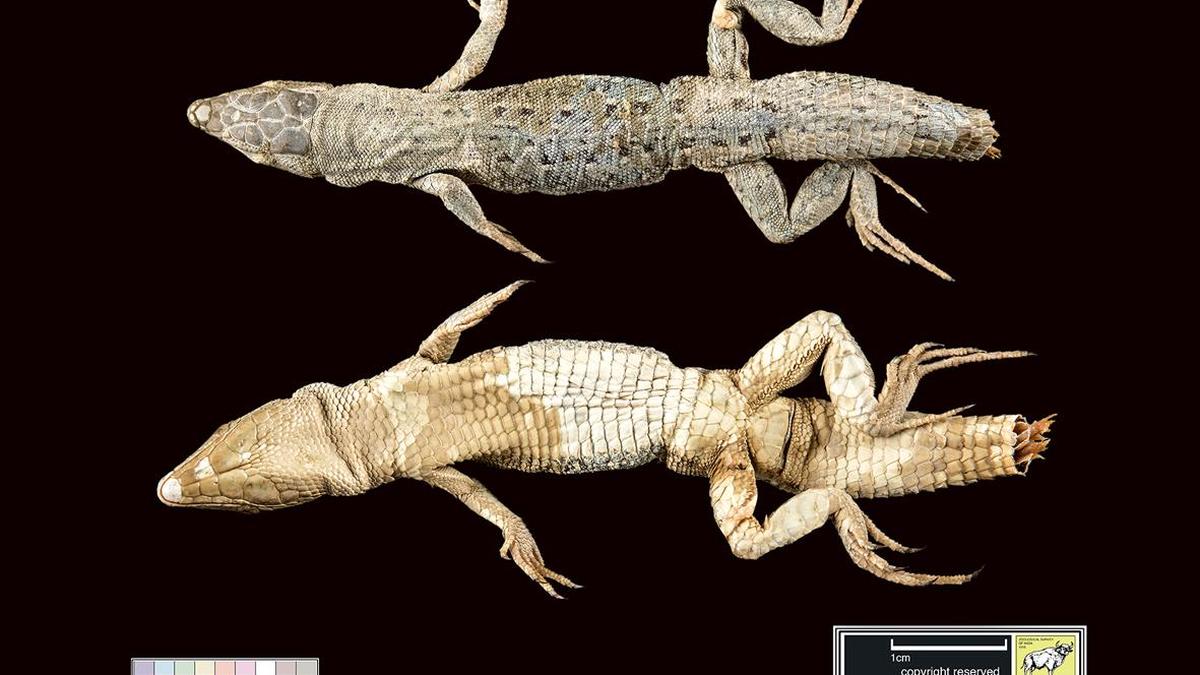The Persian long-tailed desert lizard specimen at the Zoological Survey of India’s museum in Kolkata.
| Photo Credit: SPECIAL ARRANGEMENT
Scientists from the Zoological Survey of India (ZSI) have removed confusion over the Persian long-tailed desert lizard, 153 years after it was first described from Sindh in present-day Pakistan.
This desert lizard, called Mesalina watsonana zoologically, was described as Eremias (Mesalina) watsonana by Ferdinand Stolickza, a 19th-century naturalist, in 1872 based on five specimens from the right bank of the Indus River between Karachi and Sakkar. He deposited one of the five specimens at the ZSI in Kolkata.
Distributed across Afghanistan, India, Iran, Pakistan, and Turkmenistan, this species inhabits the foothills, sand dunes, and sandy plains with poor vegetation.
Mesalina watsonana has been a key species in the study of desert lizard diversity across South and Central Asia. However, confusion over its syntypes (specimens used to define a species when no single ‘type’ specimen was selected) spread across museums in Kolkata, London, and Vienna posed a challenge to researchers.
ZSI scientists Sumidh Ray and Pratyush P. Mohapatra designated ZSI-R-5050, the syntype Stolickza had deposited, as the definitive lectotype to serve as a single type specimen. Their taxonomical feat, achieved by analysing historical records and adhering to modern zoological nomenclature codes, was published in the latest issue of Zootaxa, a peer-reviewed journal.
Beyond the taxonomic significance, the lectotype designation highlights the scientific value of Stolickza’s Persian and Sindh collections housed at the ZSI. These specimens, part of expeditions led under the British Geological Survey of India, represent some of the earliest systematic herpetofaunal documentation in the Indian subcontinent and neighbouring regions.
“Stoliczka’s material is foundational. The ZSI holds many of his type specimens that remain central to reptile taxonomy in South and Central Asia. Validating and anchoring these names is not just about scientific clarity, but also about honouring a legacy of discovery,” Dhriti Banerjee, the Director of ZSI, said on Monday (May 19, 2025).
While underscoring the role of historic collections in modern taxonomy, the lectotype designation is expected to strengthen future research on species complexes within Mesalina.
Published – May 22, 2025 05:00 am IST
